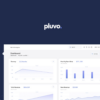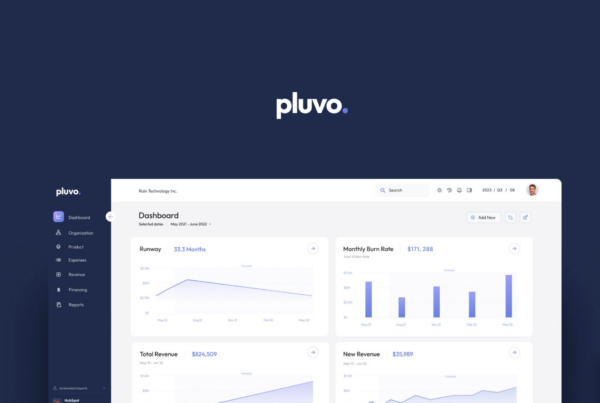What is Extended Planning and Analysis, and why is it important?
In the business landscape established between 2000-2015, financial planning and analysis (FP&A) became paramount for organizations to stay competitive, optimize resources, and drive growth. Building off of these practices, Extended Planning Analysis (xP&A) has become the future of business success and strategy.
Where traditional FP&A approaches often fall short in providing the agility and insights necessary to navigate today’s complex business environment, extended planning and analysis picks up that slack. xP&A offers a comprehensive framework that integrates financial, operational, and strategic data to drive informed decision-making and sustainable growth.
The simple fact of it is that business growth and scalability are being sacrificed for the complacency of last generation FP&A tools and theory. The modern business needs to look beyond FP&A to achieve a more holistic view of their entire organization.
Keep reading to learn why it’s crucial for mid-sized businesses between $2 – 50mil ARR (annual recurring revenue) to practice xP&A.
Extended planning and analysis is a holistic approach to financial planning and analysis (FP&A)
Extended Planning and Analysis represents a fundamental evolution in traditional financial planning and analysis methodologies. Unlike conventional FP&A, which typically focuses solely on historical financial data and budgeting processes, xP&A takes a more comprehensive approach, integrating financial, operational, and strategic insights to provide a holistic view of an organization’s performance.
It considers not only financial data like revenue and expenses but also operational data like production efficiency, organization structure, or customer satisfaction. Moreover, xP&A takes into account strategic goals and market trends, helping organizations align their financial plans with broader business objectives. By combining these different perspectives, xP&A gives a better understanding of how well an organization is doing and what factors are influencing its performance.

Read our latest on Bootstrapped Startups 🥾
xP&A integrates financial, operational, and strategic data
At its core, xP&A breaks down the silos that often exist between finance, operations, and strategy business units. This allows organizations to leverage data from across the entire enterprise to create a more comprehensive strategic plan.
By integrating financial data with operational and strategic insights, xP&A enables:
- Real-time insights: Organizations can access real-time data on key performance indicators (KPIs), financial metrics, and operational performance.
This real-time visibility allows for more proactive decision-making and enables organizations to respond swiftly to changing market conditions.
- Scenario planning: Organizations can simulate various scenarios and predict the potential outcomes of different business decisions.
By leveraging advanced analytics and predictive modelling techniques found within xP&A tools, businesses can assess the impact of different scenarios on their financial performance and develop strategies to mitigate risks and capitalize on opportunities.
Organizational alignment: xP&A ensures that financial resources are allocated in a manner that supports all organizational goals and priorities.
Extended planning and analysis leverages advanced technologies
Another key aspect of xP&A is its reliance on advanced technologies such as artificial intelligence (AI), machine learning (ML), and big data analytics. By harnessing the power of these technologies, xP&A enables organizations to:
- Automate Routine Tasks: xP&A automates routine fp&a procedures, such as data collection, consolidation, and reporting.
This automation frees up finance teams to focus on more strategic activities, such as scenario planning, forecasting, and decision support.
- Predict Future Trends: By analyzing historical data and identifying patterns and correlations, xP&A can help organizations make more accurate predictions about future performance and plan accordingly.
- Drive Data-Driven Decision-Making: By providing access to real-time insights and predictive analytics, xP&A empowers organizations to make data-driven decisions.
Whether that be allocating resources, evaluating investment opportunities, or assessing market trends, xP&A provides the data and insights needed to make informed decisions quickly and confidently.
xP&A is important for mid-sized business growth
For mid-sized businesses, xP&A offers several compelling benefits that are essential for driving growth and staying profitable in today’s market.
- Enhanced Decision-Making: xP&A equips mid-sized businesses with the insights they need to make data-driven decisions quickly and confidently, enabling them to capitalize on emerging opportunities and mitigate potential risks.
- Improved Forecasting Accuracy: xP&A leverages advanced analytics and predictive modeling techniques to enhance forecasting accuracy, allowing mid-sized businesses to anticipate market trends, identify emerging opportunities, and adjust their strategies accordingly.
- Optimized Resource Allocation: xP&A provides mid-sized businesses with visibility into resource utilization across departments and projects, enabling them to allocate resources strategically, identify areas of inefficiency, and optimize their operational performance.
- Enhanced Collaboration and Alignment: xP&A breaks down barriers/siloes by providing a single source of truth for financial and operational data, fostering collaboration across departments and functions, and driving organizational alignment.
xP&A represents a transformative approach to financial planning and analysis that goes beyond traditional FP&A methodologies.
By integrating financial, operational, and strategic data and leveraging advanced technologies such as AI, ML, and big data analytics, xP&A enables organizations to gain real-time insights, conduct scenario planning, and align financial plans with strategic objectives.
Embracing xP&A can help organizations drive growth, optimize resources, and make more informed decisions in today’s rapidly changing business environment.
If you’d like to see how a next generation xP&A tool can revolutionize your business plan and bring you unexpected profit – book a Pluvo demo today.
Follow us over on LinkedIn for more business insights that drive profit!
Let’s keep in touch. Follow us on our socials:








